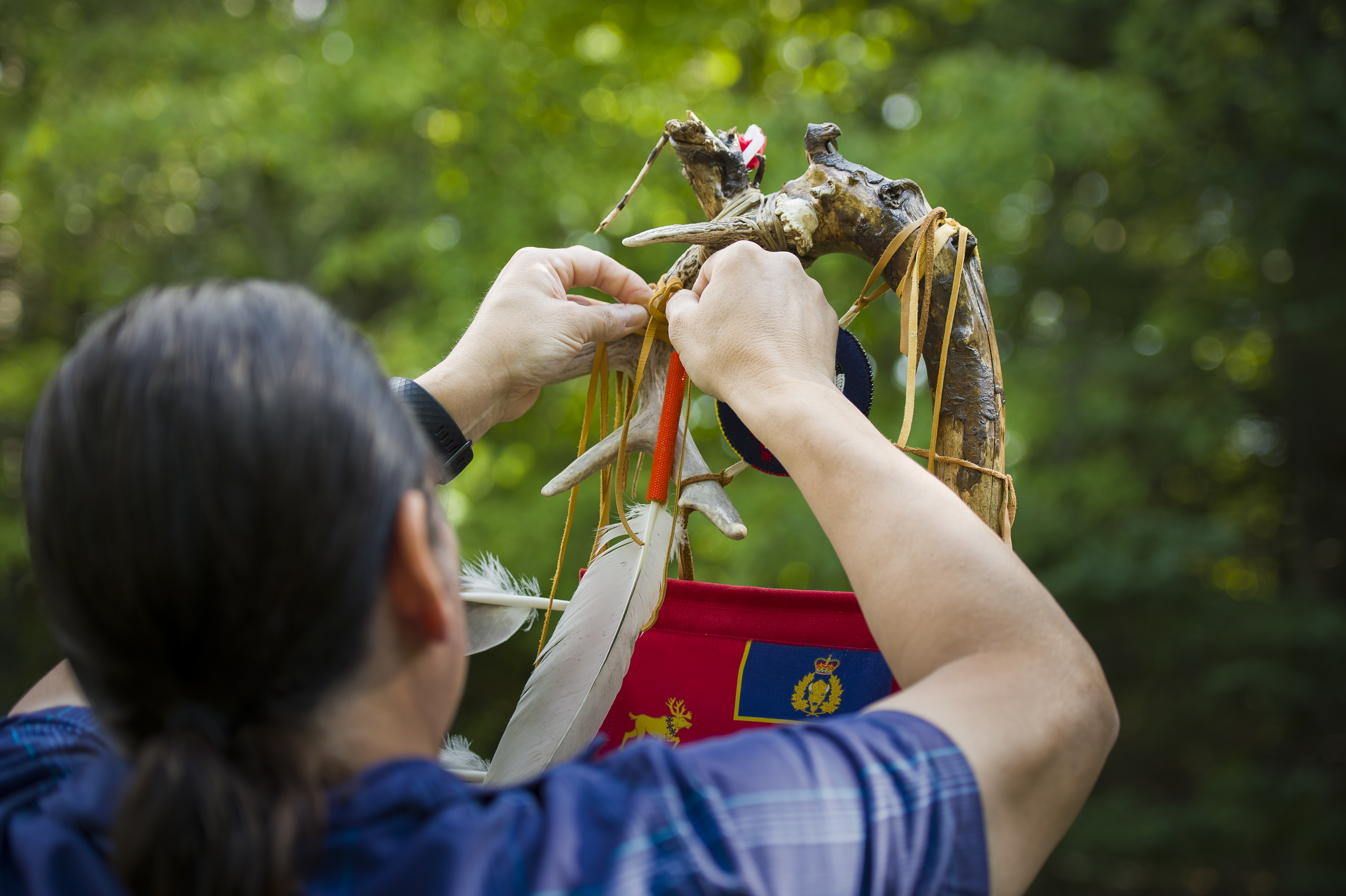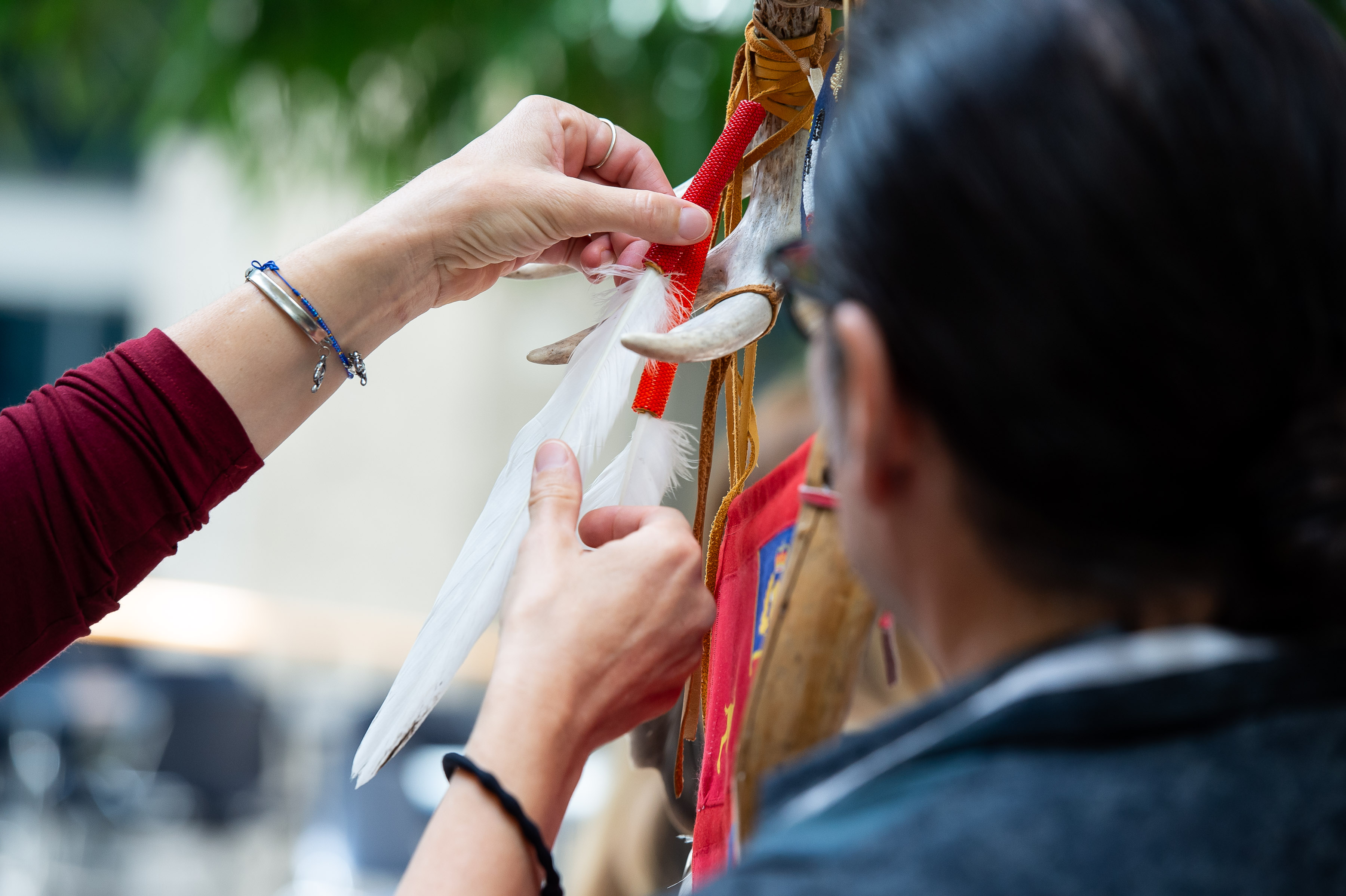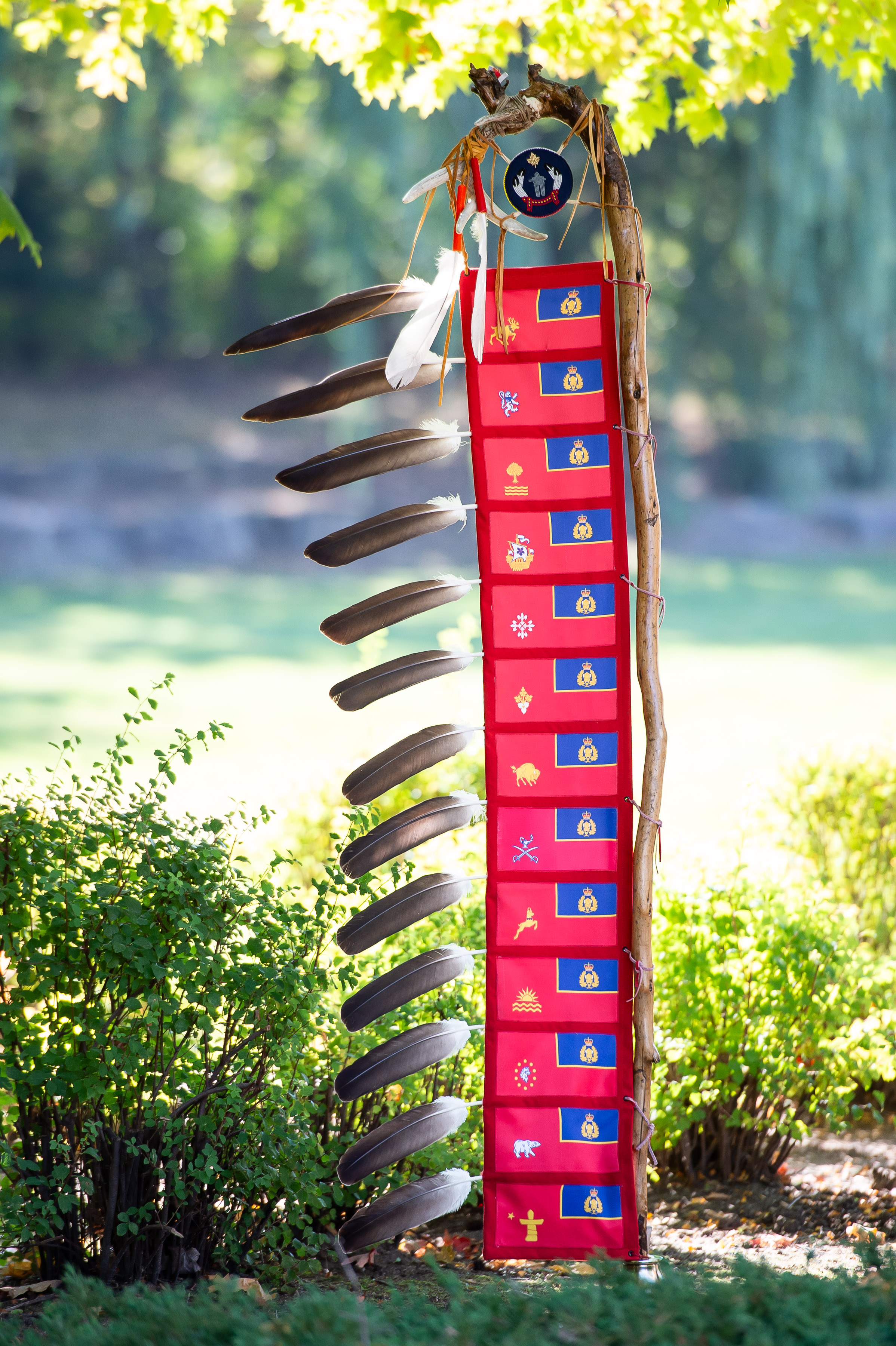RCMP National Eagle Staff



On this page
An Eagle Staff is a unique, sacred symbol that represents traditional Indigenous culture and clans. It is used at ceremonies and celebratory functions, much like a nation's flag would be.
The RCMP's national eagle staff was first unveiled in March of 2018 at the Odawa Friendship Centre in Ottawa. The ceremony was led by First Nations Elders of the Algonquin Nation.
This Eagle Staff was created to recognize and honour First Nation people on Turtle Island. This initiative is an important step for the RCMP in our reconciliation journey. For First Nations people the Eagle Staff is the sacred first flag of Turtle Island, that holds many different teachings.
In September 2021, in ceremony and in consultation with First Nation elders an additional eagle feather beaded in orange beads was added to the National Eagle Staff by Staff Sergeant Jeff Poulette. This was done to honour and commemorate the legacy of residential schools and the thousands of Indigenous children who attended them. "As the RCMP works towards reconciliation I wanted to ensure that the legacy of Indian Residential Schools will always be visibly represented by this additional eagle feather on our Eagle Staff".
In October 2023, another eagle feather beaded in red beads was added to represent the missing and murdered women, girls and 2SLGBTQI+ people. This was done in ceremony with Elder Barbara Dumont-Hill.
Since its birthing, the RCMP National Eagle Staff has been used in formal RCMP and Indigenous cultural events. The Eagle Staff was part of the Change of Command Ceremony for past Commissioner Brenda Lucki as well as several division Commanding Officers, the Assembly of First Nations General Assembly's Grand Entry's, Moose Hide Campaign's National Day of Fasting, and at the Remembrance Day ceremonies at the National War Memorial in Ottawa, Ontario.
The Eagle Staff carriers
Staff Sergeant Jeff Poulette, a First Nations RCMP Member, accepted responsibility for working on this initiative and was the first National Eagle Staff carrier. He retired in the spring of 2024 after working with Indigenous Policing Services at National Headquarters.
"This Eagle Staff for me represents the importance of honouring and recognizing the relationship and the spiritual connection to the land that First Nations people have," says Staff Sergeant Poulette. "Like all relationships, the Eagle staff required time, dedication and support from others to bring it to life."
Staff Sergeant Poulette dedicated three years to consulting with First Nation Elders and veterans on protocols related to Eagle Staffs, and receiving the staff's components. All were gifted to the RCMP from different regions of Canada.
Corporal Maureen Greyeyes-Brant and Sergeant Kelly Willis now share the responsibility of being the RCMP's National Eagle Staff carriers.
The eagle staff materials
This Eagle Staff represents the importance of honouring and recognizing the relationship and the spiritual connection to the land that First Nations hold in their hearts.
- The wooden staff is a tree from Nova Scotia given by friends of the RCMP
- The deer horn was a shed from a white tail deer, and gifted from a Métis person in Saskatchewan
- The eagle feathers are from the Manitoba Wildlife Federation
- The beaded ensign (at top) was created by an Inuk woman in Ottawa
- Sinew was gifted by Kitigan Zibi First Nation Elder from Quebec
- The large red flag and small ensign flags (one for each province and territory) was created by the RCMP's Master Tailor
"This eagle staff has 15 eagle feathers on it, one for residential schools, one for missing and murdered women, girls and 2SLGBTQI+ people and 13 for each part of Turtle Island (the original name for North America), and the 13 Grandmother Moon teachings," says Staff Sergeant Poulette"
- Date modified: